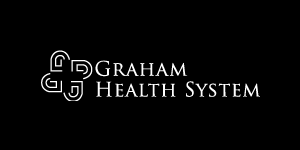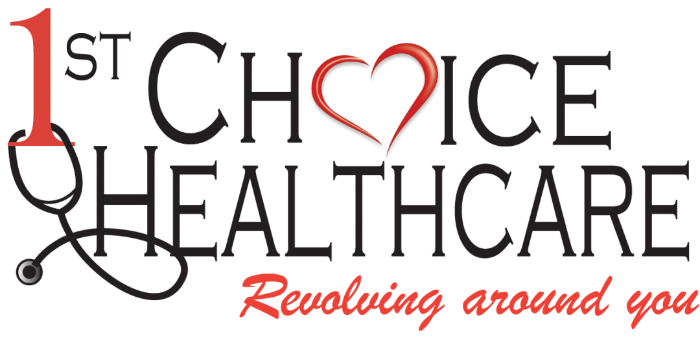Graham Health Systems
Fulton County, Illinois

The Client
Graham Health System has been serving patients in Fulton County, Illinois area for over 110 years, and today, has grown to be a progressive, comprehensive Health System focused on compassionate, quality health care. With more than 150 physicians, surgeons, advanced practice nurses and 500 support staff, Graham providers serve a wide range of specialties.
The Situation
A primary goal for the nation’s conversion to electronic health records revolved around enhanced quality of care and better management of patient populations to improve patients’ overall health and wellbeing.Over the years, the Centers for Medicare and Medicaid Services (CMS) has implemented a variety of programs to incentivize providers for achieving specific quality measures for patient care. Such programs have included the Physician Quality Reporting System (PQRS), and today, the Meritbased Incentive Payment System (MIPS) and the Medicare Access and CHIP Reauthorization Act of 2015 (MACRA). Reporting requires providers to properly enter data into their electronic health records system, and then access that data for reporting purposes. Many providers and health care organizations, such as Graham Health System, seek to streamline and automate the data capture and reporting process.
The Client's Need
As a health care system focused on quality care, from 2016-2018, Graham Health System was part of an Accountable Care Organization (ACO), which, according to CMS, is “an organization of health care practitioners that agrees to be accountable for the quality, cost, and overall care of Medicare beneficiaries who are enrolled in the traditional fee-for-service program who are assigned to it.” Members of the ACO must report on their quality care.
In order to get credit for quality reporting, individuals and patient populations must be coded properly across the many measures in place for each. Over 40 types of patient populations and health care situations are tracked, including diabetes, preventive care, osteoporosis, cancer, depression screening, fall risk, hypertension, and many more. During each patient encounter, the provider must enter a code that correlates with the result of the examination, lab test, or incidents reported by the patient.
However, as a rural health care provider, Graham Health System found that they needed additional functionality built into eClinicalWorks® to allow them to begin their PQRS reporting, as they previously hadn’t been able to produce the type of qualified data needed for their reporting requirements. In addition, they sought to optimize their use of the built-in features in eClinicalWorks® to more closely match the goals and workflows of the practice. For ten years, they had not captured the required codes or reported on the data – a situation they needed to address by creating a workable solution for all involved.
The Ero Health team has a great deal of experience in automating processes within eClinicalWorks®, and identifying the proper (and accurate) transformation of data to make automation and reporting possible. The team began by gaining an in-depth understanding of how Graham and its providers wanted to use their eClinicalWorks® to capture coding and report on quality measures. Everyone quickly agreed that an automated process would be the right solution, as it would eliminate the need to place a burden on providers to review records and enter codes manually.
Ero Health presented Graham with a report template in the form of an Excel spreadsheet, comparing it to the existing eClinicalWorks® structured data fields and verifying codes. Once complete, Ero Health began building the logic into a report for testing and validation of the coding process. All was validated, and the automation could begin. Here’s how the system
works:
- Each night, the system runs an automatic scan to review all patient notes that have been locked since the previous processing
- The automated process then identifies the clinical information that has been entered into those patient records
- The logic built into the report can isolate the clinical information and match it up to the reporting code associated with what was captured in the record. For example, for fall risks, if the provider enters a note such as “no falls in the last 12 months” and care is documented, the appropriate code for this note is identified. However, a different code would be associated with the record if a fall has occurred and is captured in the notes.
- Reporting codes are automatically entered into the patient record
- The codes are added to the record before the claim is created, so the claim is ready to go the next day
- A report of all activity (in terms of codes added to that day’s closed patient notes) is generated in the system and saved for any review that may be needed
In a relatively quick period of time, the solution was complete and implemented system-wide.
The Results
The most important result of the project is that, after ten years, quality reporting codes are being captured in eClinicalWorks®. Graham was able to provide the required reporting to their ACO, and the organization began getting credit for the work they’re doing. In 2019, Graham began reporting quality measures on their own, using the same data fields to populate the database internally.
Across the organization, all providers and staff are thrilled that this is an automated process, saving them a great deal of time that they otherwise would have to spend manually reviewing patient notes on a daily basis and identifying the proper reporting codes. The numbers on their quality measures are going well, and Graham continues to increase their reporting.
Every practice is different.
Technology is a tool to help you reach your goals, and we know that each practice’s situation, challenges and vision are unique. The Ero Health team is standing by to learn about what you’re looking to accomplish and how we may apply eClinicalWorks to help you get there.





